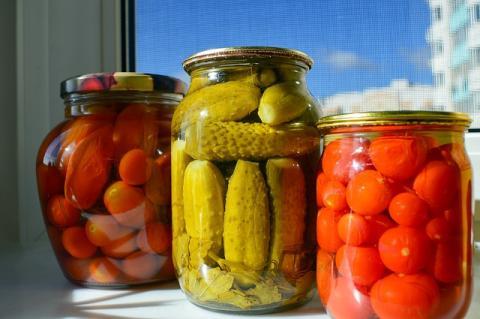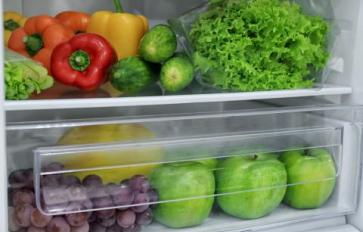
Pickling a portion of your garden’s fruits and vegetables allows you to bring farm fresh food to the table ALL year . Pickling for preservation may be one of the oldest methods of preserving food, as it traces back to the B.C. time period.
Pickling is a process used in order to preserve food, giving a much longer shelf life. The process is rather basic – the fermentation process is simple chemistry. The fermentation process is a metabolic process that converts sugar into something else such as acids, alcohols, and gas. When the chemical reaction properly takes place and the food is sealed and stored properly, your pickled food will go a long way. In fact, it should last somewhere around 6 months.
Supplies & Ingredients
Water-bath Canner, Pressure Canner, or 2 Big Pots with Lids
Mason Jars with Lids
Tongs
Vinegar OR Apple Cider Vinegar
Sugar
Spices
Funnel
Salt
This is as basic as it gets. You can use whatever spices you’d like or you can buy a pre-packaged pickling spice in the spice section of your local grocery store or Co-Op. Some people like to make simple pickled recipes, while others prefer to add many flavors and spices. You can make overnight soaked pickles or make them for the long haul.
Below I’ve included some of my favorite beginner-friendly pickling recipes:
Spicy Garlic Pickles
½ Cup Pickling Salt
1 Gallon Water
3 Pounds OR 5-6 Big Cucumbers
1 Tablespoon Peppercorns
1 Tablespoon Crushed Red Pepper Flakes
2 Large Cloves Garlic
1 Teaspoon Dill Seed
1 Large Bunch Dill Sprigs
3 Hot Peppers (I use Jalapeños)
Cut your cucumbers into the size pickle you’ll want and set them to the side.
In a large pot, combine the salt and water, mixing until it is dissolved.
Bring salt water, peppercorns, crushed red pepper, dill seed, and 1 jalapeño to a very low boil for about one minute, then remove it from the heat, set on a side burner and let it steep and cool.
Dice the garlic and slice the remaining 2 hot peppers into strips.
Fill your mason jars with the garlic, cucumbers, hot peppers, and dill sprigs. I just divide it all up evenly and fill each jar. The dill sprigs add flavor and beauty.
Seal jars.
You can use this same recipe for quick and easy overnight spicy pickles. Follow the instructions as above except you will want to crush the garlic instead of dice it and dice the hot peppers instead of cutting them into strips. Instead of filling your jars just toss the cucumbers, crushed garlic, dill sprigs, and diced peppers into a big bowl and pour the brine right over top. Cover it and allow it to cool before placing it in the refrigerator overnight. You can actually use the pickles within the next three days after soaking -- just make sure it is sealed well and that the vegetables stay under the liquid, avoiding any exposure to air. One good rule of thumb when making pickles – whether it’s the overnight process or the full canning process – always look for any air bubbles. Any bubbles will impede the preservation process. Air bubbles can also indicate bad bacteria growing. Unfortunately, if there are bad bacteria growing in your jar, you will be forced to compost that batch.
This same recipe for the spicy garlic pickles is great for pickling peppers, carrots, beets, and many other vegetables. Fruits and vegetables aren’t the only foods that are pickled – there are pickled eggs, ham hocks, and much more.
Not only are pickled foods great for keeping food fresh and edible for months, they are also really good for the body. I like to use a salt brine for some pickled items, but I also like to use white vinegar and apple cider vinegar for more of the medicinal and health benefits. Pickled goods are packed full of probiotics, the healthy bacteria that helps the body break down sugars and hard-to-digest cellulose in food. You will also find numerous vitamins, minerals, antioxidants, and tasty pleasures in your pickled produce.








